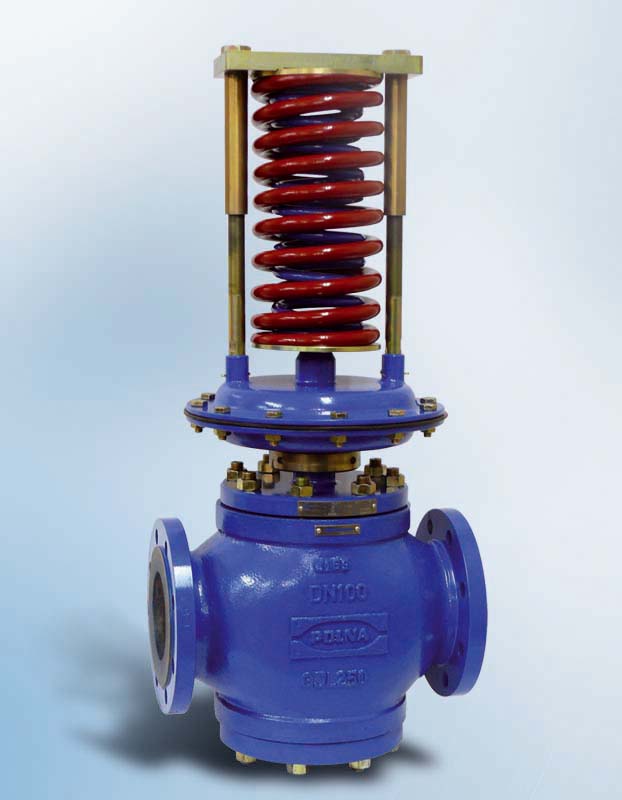
PRESSURE REDUCER RCW-2
FUNCTION
Pressure regulators are designed to maintain set-up, constant pressure in process installations, which are connected to regulator`s valve outlet, regardless of fl uctuation of supply pressure. Regulators are used in water- pipe networks in order to prevent the installation against excess pressure increase. Other applications need to be consulted with the Manufacturer.
CONSTRUCTION
The reductor comprises three main units:
• a single-seated valve (1), which is differential pressure balanced,
• actuator (2),
• and adjuster set (3).
CHARAKTERISTICS
• high tightness of the shut-off due to the application of plugs with EPDM sealings
PRINCIPLE OF OPERATION
Fluid fl owing through the valve constitutes the driving force of the regulator. The impulse of regulated pressure,as measured downstream the valve, is applied to the actuator pressure chamber (2). The resulting pressure on the actuator diaphragm is counterbalanced by the spring tension in the adjuster set (3). Thus, a change in the regulated pressure causes valve (1) opening or closing, and allows for keeping the reduced pressure constant at the valve outlet.
Technical data
| Regulator’s Size | DN 20; 25; 32; 40; 50; 65; 80; 100; 125; 150; 200; |
|---|---|
| Nominal pressure | PN16; |
| Kvs coefficient | 0,6 ... 250 m3/h |
| Max. fluid temp | 0 / +100°C |
| Setting ranges | 0,1 ... 11,0 bar |
| Flow characteristics | linear |
| Leakage class | • IV class PN-EN 60534-4 |
| Body Materials | • EN-GJL250 |
 37-700 Przemyśl, ul Obozowa 23
37-700 Przemyśl, ul Obozowa 23 np@reduktory.com.pl
np@reduktory.com.pl 16 678 30 20,
16 678 30 20, 
